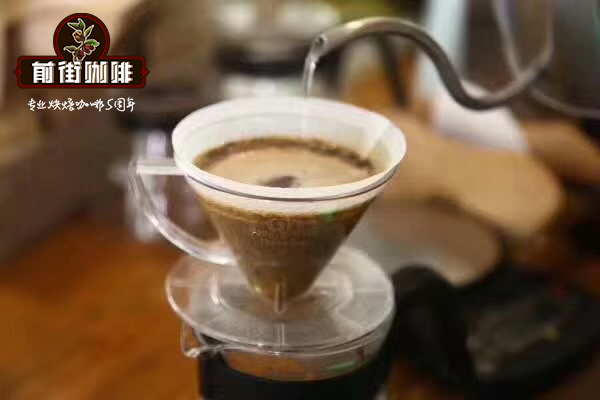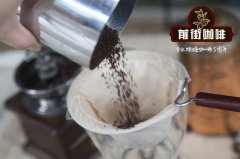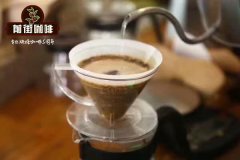Hand punching: analyzing the difference between one-knife flow and three-knife flow

Professional coffee knowledge exchange more coffee bean information please follow the coffee workshop (Wechat official account cafe_style)
One knife stream
Its meaning is that after steaming, only one uninterrupted injection of water is done, hence the name.
After steaming, a continuous injection of water can make the coffee powder continuously soak in water, the retention liquid can fully release the aromatic substances in the coffee powder, and the flow velocity increases continuously, reducing the water flow before the water overflows the filter cup. This method mainly controls the amount of water injection and the flow rate. It is necessary to know when to inject water so that the whole section can be taken without losing the sense of balance. Inappropriate water injection will destroy the overall sense of balance of coffee.
The main purpose of this method is to maintain a peaceful flavor and a sense of balance. What is not so good is that, because the water injection technique is not well controlled, the water falls through the filter paper on the edge of the upper layer where there is no coffee powder, so that the coffee made may be mixed with water smell.
Three-knife flow
It is a kind of brewing method that is extracted by stages and extended by one knife stream, and a section of water is injected into three stages.
Although it is an extension, but the effect is different, at least reduce the instability of the flow at the edge of the filter paper. Secondly, three-stage water injection can clearly distinguish the flavor residues in the front, middle and back, and adjust the extraction. Each time the amount of water is increased after steaming, water is usually injected when the retention liquid is about to drop to the powder level, and small, medium and large water flows are used to do three-stage extraction, depending on the state of bean powder.
This method is mainly able to segment, facilitate the identification of residual aromatic substances, but also make a richer sense of hierarchy. The downside is that the requirements of grasping the flow rate and controlling the amount of water are also relatively high.
Although many cafes are in use, attention is paid to the measurement, not the flow rate and water control. Most people go deep into this at best.
Important Notice :
前街咖啡 FrontStreet Coffee has moved to new addredd:
FrontStreet Coffee Address: 315,Donghua East Road,GuangZhou
Tel:020 38364473
- Prev

Don't drink coffee as water, your stomach and intestines can't stand it.
Professional coffee knowledge exchange more coffee bean information please follow the coffee workshop (Wechat official account cafe_style) do you know what the effects of coffee on the human stomach and intestines? Benefits: 1. Coffee contains natural antioxidants, which can reduce the risk of bowel or rectal cancer. 2. Coffee has a diuretic effect, which can increase the amount of urination, thus increasing the number of times to go to the toilet. 3. Coffee
- Next

Hand punching: understanding of stirring method and segmented extraction
Professional coffee knowledge exchange more coffee bean information Please follow the coffee workshop (Wechat official account cafe_style) A knife flow means that after steaming, only one continuous filling is done, hence the name. After steaming, a continuous injection of water can make the coffee powder soak in water continuously, and the retention liquid can fully release the aromatic substances in the coffee powder, and the water can flow.
Related
- Beginners will see the "Coffee pull flower" guide!
- What is the difference between ice blog purified milk and ordinary milk coffee?
- Why is the Philippines the largest producer of crops in Liberia?
- For coffee extraction, should the fine powder be retained?
- How does extracted espresso fill pressed powder? How much strength does it take to press the powder?
- How to make jasmine cold extract coffee? Is the jasmine + latte good?
- Will this little toy really make the coffee taste better? How does Lily Drip affect coffee extraction?
- Will the action of slapping the filter cup also affect coffee extraction?
- What's the difference between powder-to-water ratio and powder-to-liquid ratio?
- What is the Ethiopian local species? What does it have to do with Heirloom native species?

